In this blog, TV Sajeev argues the importance of educating stakeholders on changing their sensibility about forests to accommodate larger concerns such as climate change. To do so, the extension work in the forestry sector should be built on the solid rock of scientific data and empirical projections.
CONTEXT
Globally, the perception about forests have considerably evolved over the past few decades. Initially it moved from production forestry to conservation forestry during which the priority shifted from timber production to protection of biodiversity. There was a wild spree of announcing wildlife sanctuaries, national parks, and biosphere reserves across the globe. Soon came concerns on the impact of climate change and the role of forests in maintaining local climate, and these got prioritised. The wide-ranging ecosystem services provided by forests got appreciated. Recent floods across the country have now put one ecosystem service of forests – its water retention and release capability – into the top priority. This blog explains how a research institution dedicated to tropical forestry in the state of Kerala, India, conducted itself in providing extension services through changing times and paradigms in forestry during the past four-and-a-half decades.
The Kerala Forest Research Institute (KFRI) came into existence in 1975 when production forestry was still the main focus of tropical forest research. Protecting commercial tree plantations from pests and diseases, and management of declining soil nutrients and physical texture arising from multiple rotations were the focus themes. Pest management of plantation species like Teak, disease management of Eucalyptus, and the recommendation to abolish Taungya system (the practice of doing agriculture during the initial years of forest plantation establishment) due to worsening soil erosion were indicative of successful extension efforts. It was also a time when the increasing role of conservation forestry was imbibed by KFRI as demonstrated by their floral and faunal surveys and species-specific studies oriented towards conservation of endemic/keystone/umbrella/endangered species. Methods for census of wildlife populations were standardised by KFRI which also imparted training to forest staff and volunteers to conduct the census. Subsequently they did the data analysis that provided the very first estimates of various species of wildlife and their changing numbers in the forthcoming years.
These formative years also laid the foundation for seamless work with the major stakeholder in forestry – the Forest Department. While there were many successes, such as management of diseases in forest nurseries and pests in young plantations, there were failures too: the non-implementation of a biocontrol method developed after nearly two decades of research for the management of the teak defoliator pest which causes significant economic loss, being the foremost among them. While the extension services for the Forest Department is still going on and has reached a level of real time problem solving, this blog focuses on some of the innovative extension activities.
EXTENSION ACTIVITIES OF KFRI
Tree Health Helpline
It is a single window – created for the general public and various stakeholders in forestry – to directly access information on any aspect of tree health. It opened up the knowledge base created in KFRI over long years to the common man, while for the major stakeholders it offered real time access to information. With the advent of mobile phones, forest staff would call directly from the field, explain the symptoms and get remedial measures which help in fast containment of the problem. An exclusive helpline for medicinal plant farmers was started recently.

First Question
 While forestry is basically an area of applied research, it very much depends on advances in fundamental sciences and the scientific temper prevalent in society. While the country found a new awakening of pseudo-science and mythology posing as history, KFRI initiated First Question[1] – a dedicated helpline where children could call and post any questions. These questions will be scientifically answered and this became an instant hit all across the country. It created a database of very interesting questions which only a child would ask.
While forestry is basically an area of applied research, it very much depends on advances in fundamental sciences and the scientific temper prevalent in society. While the country found a new awakening of pseudo-science and mythology posing as history, KFRI initiated First Question[1] – a dedicated helpline where children could call and post any questions. These questions will be scientifically answered and this became an instant hit all across the country. It created a database of very interesting questions which only a child would ask.
Democratising Innovations
KFRI has partnered with Kerala Development and Innovation Strategic Council (K-DISC) under the Young Innovators Programme (YIP). This programme aims at empowering future innovators to invent new products, services or models to meet emerging requirements, unarticulated needs, or existing marketing needs of society more efficiently through an innovation challenge. KFRI works on the theme of Disaster Management and Climate Change wherein its scientists would mentor innovators so as to realize their ideas. Institutional mechanisms for innovations are thus being opened outside of corporate houses, and KFRI is now in the process of collation and validation of hundreds of innovative ideas in the forestry sector, such as gadgets for firefighting, mapping, accessing tough terrains, mitigating wildlife conflicts, and many others.
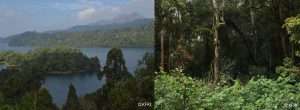 The Western Ghats include a diversity of ecosystems ranging from tropical wet evergreen forests to montane grasslands containing numerous medicinal plants
The Western Ghats include a diversity of ecosystems ranging from tropical wet evergreen forests to montane grasslands containing numerous medicinal plants
Advocacy to Protect Forests
While plantations and expansion of agriculture were the factors that reduced forest area initially, hydroelectric projects became a major factor during the last four decades. The primary data collected by KFRI from the pristine forests, which were set to be drowned, became the knowledge base for widespread protests against sinking forests. Starting from the Silent Valley project, it expanded to other areas like Pooyamkutty and Athirappilly. The struggles which happened in all these places were ideal platforms for forestry extension work wherein the value of forests and their ecosystem services could be communicated to the larger public.
| Box 1: Destruction of Forests: Then and Now The contest between forests and non-forests or nature and culture is a fairly long tale. The epics of the land provide details of how the monks who have gone into the forests for meditation complain of fierce animals and how the king conducts rescue trips into the forests, which essentially becomes a poaching spree. A few days of residence in the forests by the king and his paraphernalia is enough to degrade the forests into which agriculture expands. There are also numbing details of burning entire natural forests for which reasons were flimsy, but essentially led to take over of forest lands by agriculture. This history of contests between nature and culture took a critical turn with the advent of colonization by European countries. Most of the tropical countries had been colonised by temperate countries for a sufficiently long period which facilitated a huge plunder of its resources. Forests were the first resource to be exploited followed by minerals and oil. The removal of natural forests and replacement with monoculture plantations was an immediate offshoot of the realization that trees from natural forests will not be enough. Cultivation of trees and plantation crops like tea, coffee, cardamom and rubber, converted huge landscapes into monocultures. The forest departments of these colonised countries were started by the Imperial Government. Just as in the case of the education system that the colonisers implemented were intended to produce good clerks for their use, the forest officers were trained in the art of cutting, measuring and trading trees. Institutionalization of forestry had deep roots so that hardly anything changed in forest management after Independence in the majority of tropical countries. Natural forests continued to give way to plantations but since the forestry sector contributed well to the state exchequer, no questions were raised. |
Linking Science and Governance
One of the major breakthroughs in linking Science and Governance in India happened in 2011 when the Western Ghats Ecology Expert Panel commissioned by the Ministry of Environment and Forests – to look into the conservation of the oldest forest landscape in the country – submitted their report. The report, for the first time divided the entire Western Ghats area into three zones, based on various levels of ecological sensitivity and prescribed do’s and don’ts for each zone. The zonation was done based on scientific principles and the implementation process was recommended to be purely on a participatory basis involving the Grama Sabhas. The report immediately drew criticism from the mining community which spread fast to religious organisations and political outfits. While a large amount of false information was spread about the report, KFRI opened a helpline for the general public so as to get their concerns on the report explained and diffused.
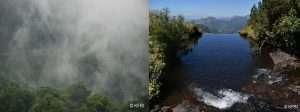 Forests help control the water cycle by regulating precipitation, evaporation and flows
Forests help control the water cycle by regulating precipitation, evaporation and flows
The floods of 2018 were an eye opener for Kerala State, which was long considered to be a safe place without natural disasters. The seamless communication network established and maintained since long by way of help lines helped KFRI to open a 24×7 helpline to rescue people from flood-hit areas. Later, the Institute developed restoration protocols for riverine ecosystems impacted by the flood and helped the local self-government institutions to implement it.
NEW CHALLENGES
Any good system of research extension needs to be sensitive and adaptive to emerging issues of resource management. Human-Wildlife conflict is one such issue which needs urgent mitigation in the forestry sector. Being a multidimensional problem which involves biology, ecology and population dynamics of the wildlife species in question and land use practices, economy and perception of people on forest fringes makes it the melting pot of forestry knowledge. Issues, like forest fires, are again a socially induced problem; the spreading of alien invasive plants into pristine forest areas and displacing native biota are next in the line.
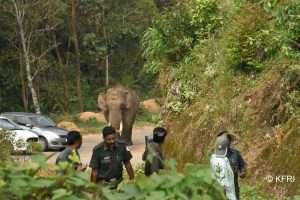 Human-wildlife conflict
Human-wildlife conflict
END NOTE
To sum up, extension of forestry research happens in a socio-cultural milieu which is influenced by global and local concerns. Unlike many other sectors, extension research in forestry should look at long-term objectives rather than short-term economic gains. In doing this, there should be adequate education of the stakeholders which would change their sensibility so as to accommodate larger concerns like climate change. The extension work should be built on the solid rock of scientific data and empirical projections.
Looking at success and failure in equal measure, how can this government-run research institution thrive and maintain its scientific critique of government actions while being within the authority of that government? The answer is rather simple: people here do not believe that the government pays them. They know that it is the people who are paying them through the government. This is the crux, trigger and passion of good research extension. The real stakeholder is the larger society and the upcoming generations who need to live in our landscapes.
Otto Rene Castillo, the Guatemalan poet had famously written:
“One day, the apolitical intellectuals of my country will be interrogated by the simplest of our people. They will be asked what they did when their nation died out slowly, like a sweet fire small and alone.”
If ever that happens, we do believe that this institution will be spared, thanks to its committed extension services which encompass local problems and global concerns.
FOOTNOTE
1. First Question Helpline for Kid’s Question. Helpline number-0-487-2690222 https://www.kfri.res.in/tree_help.asp

Dr TV Sajeev, Research Coordinator, Kerala Forest Research Institute. He can be reached at tvsajeev@gmail.com.

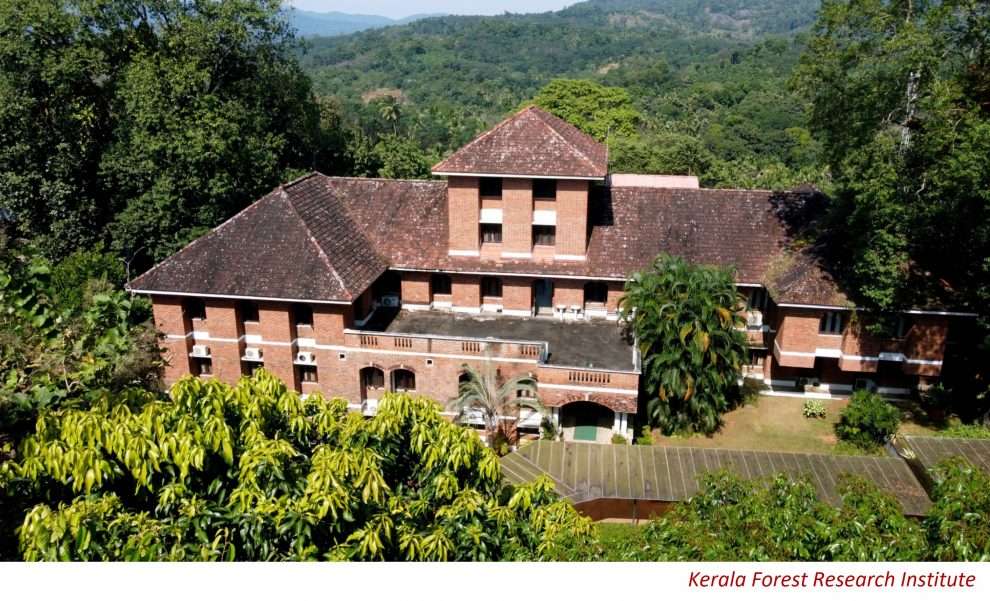
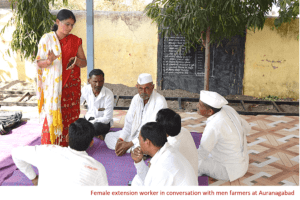
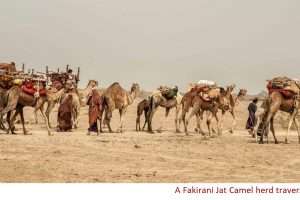
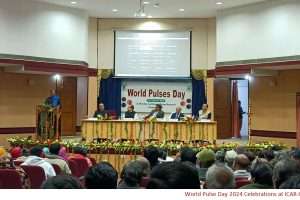
Excellent treatise on Forest Research Extension-Ideas, Innovations and Experience. Worth pursuing to respect forests as saviors of life on the planet. Great efforts by KFRI! Compliments to Dr. T.V.Sajeev.
Excellent presentation. Will help increase awareness on the value of forests and the services it provide. Congratulations Dr. Sajeev.
Many states in India are confronted with the issues like forest encroachment, destruction and displacement of forest inhabitants. Though the research and development organizations concerned with forestry are putting their efforts to persuade the government towards sustainable development options, political interests are overpowering and sidelining such efforts, many times. Massive agitations by the people instigated by political/religious organizations against the implementation of Madhav Gadgil Committee report, intended for the protection of the fragile Western Ghat areas in Kerala is a typical example of this. Such instances are proving that organizations like KFRI may strengthen their advocacy efforts in collaboration with research and development organizations in the agricultural sector and local self-government organizations to sensitize people towards sustainable development alternatives. In such a backdrop, EAS can play a pivotal role like awareness creation, advocacy, partnership facilitation etc. Fundamentally this blog outlines many of such key roles of EAS in Forestry sector.